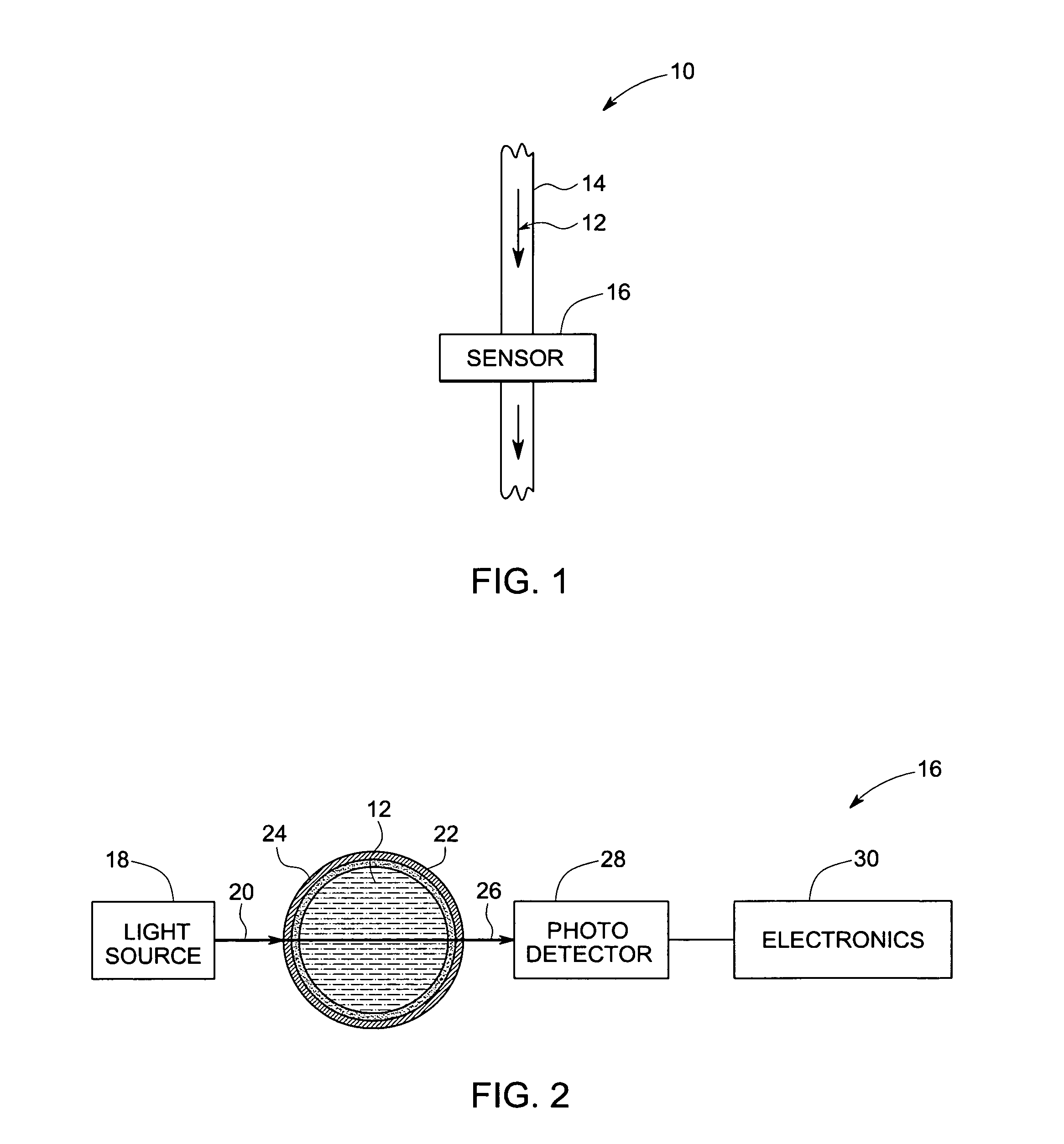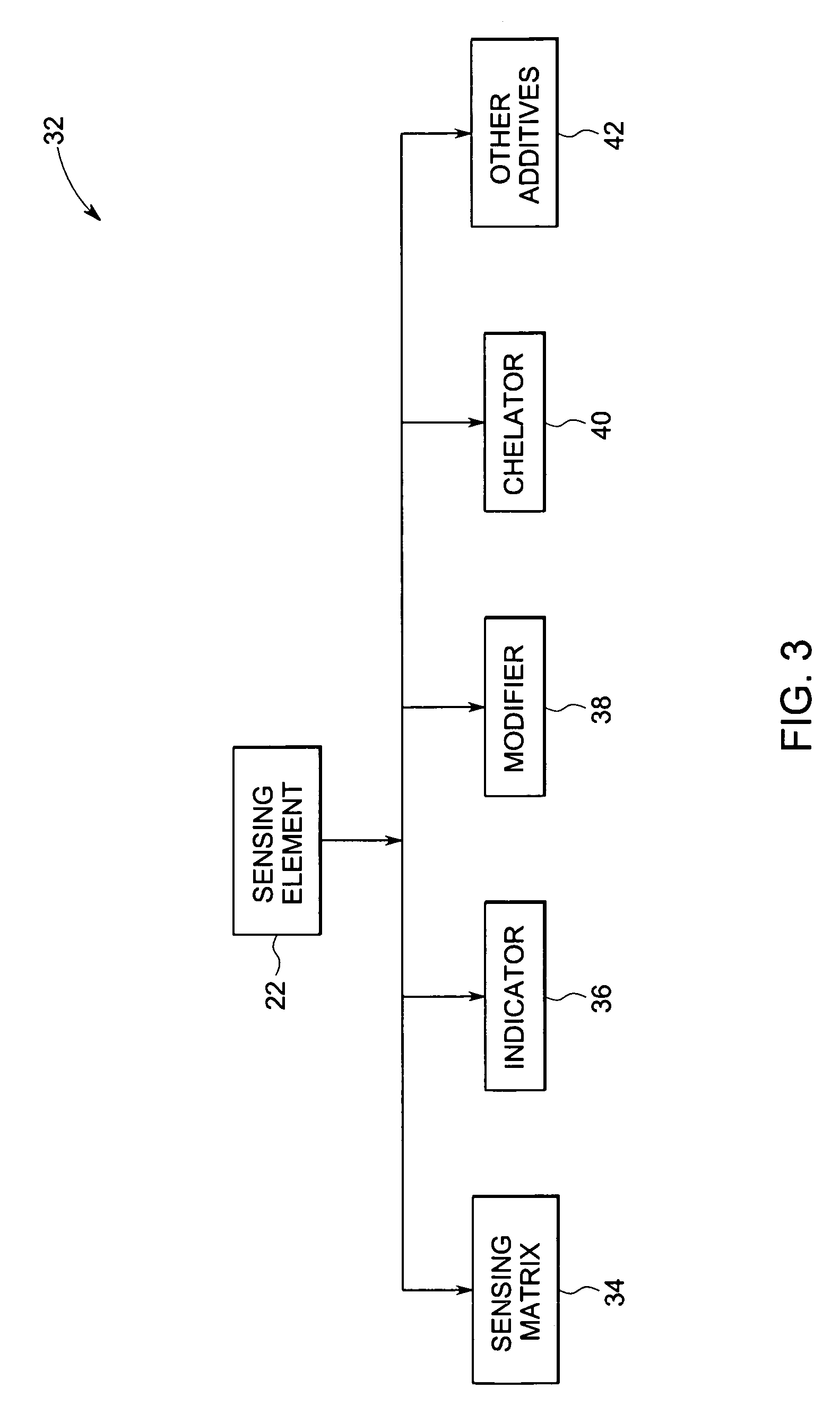Appliance using a water hardness sensor system and method of operating the same
a sensor system and water hardness technology, applied in the field of water treatment, can solve the problems of affecting the performance of water softeners, affecting the performance of cleaning detergents, and affecting the performance of industrial boiler systems and heat exchangers, and affecting the maintenance and performance of water softeners
- Summary
- Abstract
- Description
- Claims
- Application Information
AI Technical Summary
Problems solved by technology
Method used
Image
Examples
examples
[0034]The examples that follow are merely illustrative, and should not be construed to be any sort of limitation on the scope of the claimed invention.
[0035]Experiments were performed using eriochrome black T (EBT) as an indicator in a water hardness sensor. In addition, PEI was used as a pH modifier and poly 2-hydroxyethyl methacrylate was used as a sensing matrix. The thickness of a coating of the indicator, pH modifier and the sensing matrix was about 10 micrometers (μm). A spectral response of the EBT-based water hardness sensor to exposure to a sample containing magnesium is illustrated in FIG. 8. The Y-axis designated generally by reference numeral 118 represents absorbance of magnesium and is dimensionless. The X-axis designated generally by reference numeral 116 represents wavelength of light in nanometers (nm). Plot 120 illustrates the absorbance of EBT-based water hardness sensor in a sample without magnesium, while plot 122 illustrates the absorbance of EBT-based water ha...
PUM
| Property | Measurement | Unit |
|---|---|---|
| angle | aaaaa | aaaaa |
| thickness | aaaaa | aaaaa |
| degree of hardness | aaaaa | aaaaa |
Abstract
Description
Claims
Application Information
 Login to View More
Login to View More - R&D
- Intellectual Property
- Life Sciences
- Materials
- Tech Scout
- Unparalleled Data Quality
- Higher Quality Content
- 60% Fewer Hallucinations
Browse by: Latest US Patents, China's latest patents, Technical Efficacy Thesaurus, Application Domain, Technology Topic, Popular Technical Reports.
© 2025 PatSnap. All rights reserved.Legal|Privacy policy|Modern Slavery Act Transparency Statement|Sitemap|About US| Contact US: help@patsnap.com



